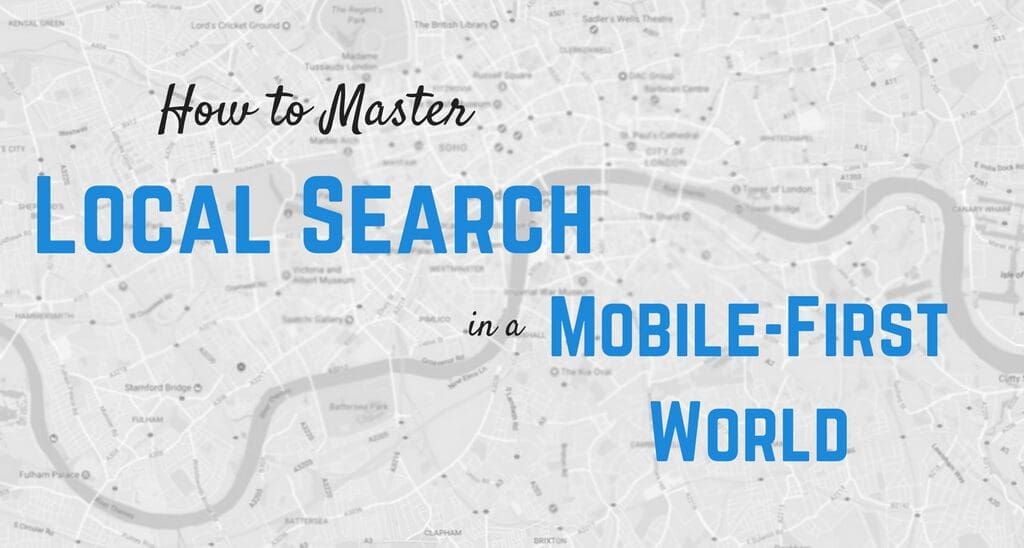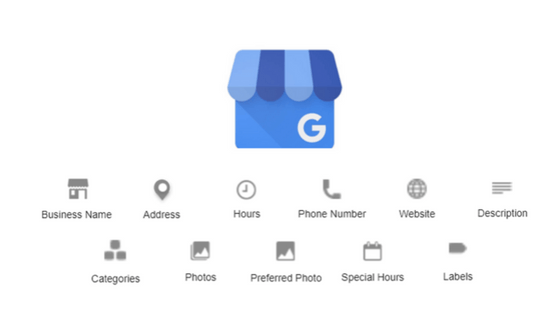
Maximize your local presence through strategic location management.

The digital landscape has changed. We now live in a mobile-first world.
Mobile traffic will drive 75% of global Internet usage in 2017, and this will grow to 80% by 2018 (Zenith 2016). It’s not just videos and social media, either: 60% of all search queries now take place on mobile devices.
But: mobile doesn’t work in isolation. Desktop now claims less than one third of digital media time, but most transactions still occur on desktop, and in-store footfall will continue to be a major source of revenue. How to measure this multi-touch user journey is something we’re helping our clients to understand. Omni-channel measurement has never been more relevant.
As mobile usage has increased, so too have consumer expectations. Consumers care about relevance, context, speed, personalisation and convenience. They want messages that cut through the clutter and give them the information they need.
Mobile is key to delivering on these expectations. Here what you need to know to master local search in a mobile-first world.
On average, consumers use between three and 10 sources along the journey to conversion. From search, maps, email and social media to review sites and external blogs – customers know what they want, and they will research the hell out of it to help inform their buying process.

Mobile is a key driver of this change. Whether it’s checking to see if a certain item is in stock at their local store or consulting reviews on their phone before making a desktop purchase, users have fully embraced mobile as a way to connect their fragmented media landscape. Why? Because carrying a SmartPhone in their pocket means they can be active whenever and wherever they want.
As a digital marketing agency, it’s our job to provide our clients with the information they need to help them succeed wherever their customers decide to interact with their brand. Google’s local pack dominates the SERPs; four out of five consumers want search ads customised to their city or even their postcode; and mobile is a key tool used when deciding whether a trip to the local shop is worth it or not. Also, ‘near me’ searches have increased by 40% over the last two years as Google now treats almost all searches as local, which inherently, mobile is.
Notice a trend here? The only way to get significant exposure on mobile has to be on location. Local is the key to mastering mobile.
Take the time to walk in your customers shoes. Get on your mobile and experience how customers interact with your site on a mobile. More importantly, how do they find out about your location on your site via a mobile device. We’ve found that some of our clients’ websites didn’t offer the best user experience as their site wasn’t connected to local properties (such as Google Maps) in the smoothest way possible. Almost all of the time, Apple Maps is wrong.
Take advantage of the new and unique opportunities that mobile presents. Local inventory ads, for example, show users where they can find local product in stock – without having to travel all the way to the store to check, only to be disappointed if the item isn’t there.
It’s also important to optimise your onsite experience for local. Your store location pages should have an onsite map listing, the store details, and any important product information. If it’s not well optimised, users are going to click away.

Accuracy, consistency, and completeness are all vital when building trust. This becomes even more critical on mobile. We’ve seen some scathing customer reviews for clients where their customers have driven to stores which are closed as their Google Map data was out of date.
Just look at the real review below for a popular retail brand:

67% of consumers say they lose interest in a brand if inaccurate location information is provided online.
It’s also important to be consistent. If you are listed as a coffee shop on Facebook and a deli on Google Maps, you’ll end up with inconsistent brand presence.
Finally, don’t neglect the completeness of your data. Opening hours and location addresses are one thing, but what about photos, events and special notices? Anything your customers could possibly want to know should be available to them on their mobile device. Also, pay attention to how you describe your brand on sites such as Google Maps; don’t waste time describing the interior of your shop, let them know what you sell and if you do take-away for example.
Local optimisation doesn’t end with adding a store page for each location. Leverage this reach by creating authentic local content for each location, working with your store managers to solicit positive reviews, and offering unique promos based on local events.
Your website isn’t the only place to engage with users. Customers engage with your digital storefront across external mobile channels 10 times more than on your own website. Native apps, such as Facebook and Snapchat, can all be personalised and targeted to your customer audience segments. Your audience is there, so don’t neglect them.

Your local efforts on mobile shouldn’t sit in a silo from the rest of your digital strategy. Integrate it with your SEO research to optimise for local searches. If ‘gyms in south london’ receives a higher search volume than ‘fitness centres in south london,’ for example, tailor your local content and data toward the former search term.
Subscribe to our monthly newsletter.
Mobile allows you to embrace the way your customers find and interact with you, so give them the experience they’re looking for. Strive for accurate listings with rich information, leverage the reach of social opportunities, expand your activity beyond your owned channels (this is key), and optimise content for local search opportunities.
It’s not rocket science, but it does take a lot of time, effort, and expertise. That’s where we can help. Unlike similar services, we don’t give you the tools and leave you out in the woods. We offer a managed service, handling the implementation and legwork for you.
Get in touch with us to learn how to help your business win local search in a mobile-first world.

Maximize your local presence through strategic location management.
Maximize your local presence through strategic location management.
Subscribe to our monthly newsletter.